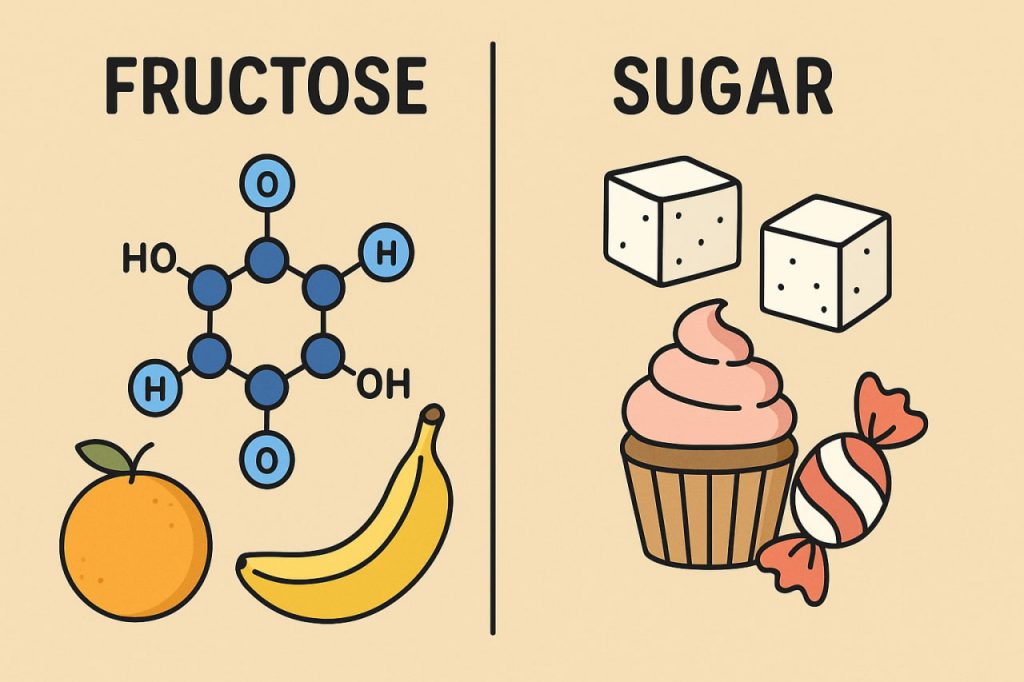In everyday language, sugar usually refers to sucrose, the common sweetener found in table sugar. Chemically, sucrose is a disaccharide composed of two simple sugars: glucose and fructose. It is naturally present in sugarcane, sugar beets, and many fruits. Once consumed, sucrose is broken down in the body into glucose and fructose, which then enter metabolic pathways.
What Is Fructose
Fructose is a simple sugar, or monosaccharide, found naturally in fruits, honey, and some vegetables. Unlike glucose, which is the body’s primary energy source, fructose is processed mainly in the liver. It has a sweeter taste than glucose and sucrose, which is why it is often used in sweeteners like high-fructose corn syrup.
How the Body Processes Them
Glucose is quickly absorbed into the bloodstream and used for immediate energy by most cells. Fructose, however, bypasses this direct energy pathway and is metabolized in the liver, where it can be converted into glucose, stored as glycogen, or transformed into fat. This difference in metabolism explains why excessive fructose intake is often linked with health concerns such as fatty liver disease.
Health Implications
Moderate amounts of natural fructose from fruits are generally considered healthy, as they come with fiber, vitamins, and antioxidants. However, high intake of added fructose, especially from processed foods and sugary drinks, may increase the risk of obesity, insulin resistance, and metabolic disorders. Table sugar also contributes to these risks, but because sucrose combines glucose and fructose, its effects differ slightly.
Sweetness and Usage
Fructose is sweeter than sucrose, which means less is needed to achieve the same taste. This makes it attractive for the food industry, as it can lower production costs. However, the widespread use of high-fructose corn syrup has raised concerns about overconsumption, as it appears in many processed foods and beverages.
Natural vs. Added Sources
It is important to distinguish between naturally occurring fructose in fruits and artificially added sugars. Whole fruits contain fiber and nutrients that slow down sugar absorption and support health. Processed foods with added sugars, on the other hand, provide little nutritional value and contribute to excessive calorie intake.
Conclusion
Fructose and sugar differ in structure, metabolism, and health effects. While both provide sweetness and energy, excessive consumption—especially from processed foods—poses risks to health. Choosing natural sources like fruits over added sugars is a healthier way to enjoy sweetness while maintaining balanced nutrition.
Glossary
- Sugar (sucrose) – common table sugar made of glucose and fructose.
- Fructose – a simple sugar (monosaccharide) found in fruits and honey.
- Glucose – body’s main energy source, quickly absorbed into the bloodstream.
- Monosaccharide – simplest form of sugar molecule.
- Disaccharide – sugar molecule made of two monosaccharides.
- High-fructose corn syrup – industrial sweetener containing glucose and fructose.


